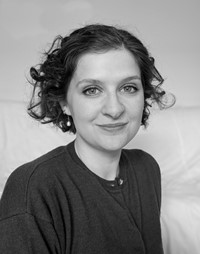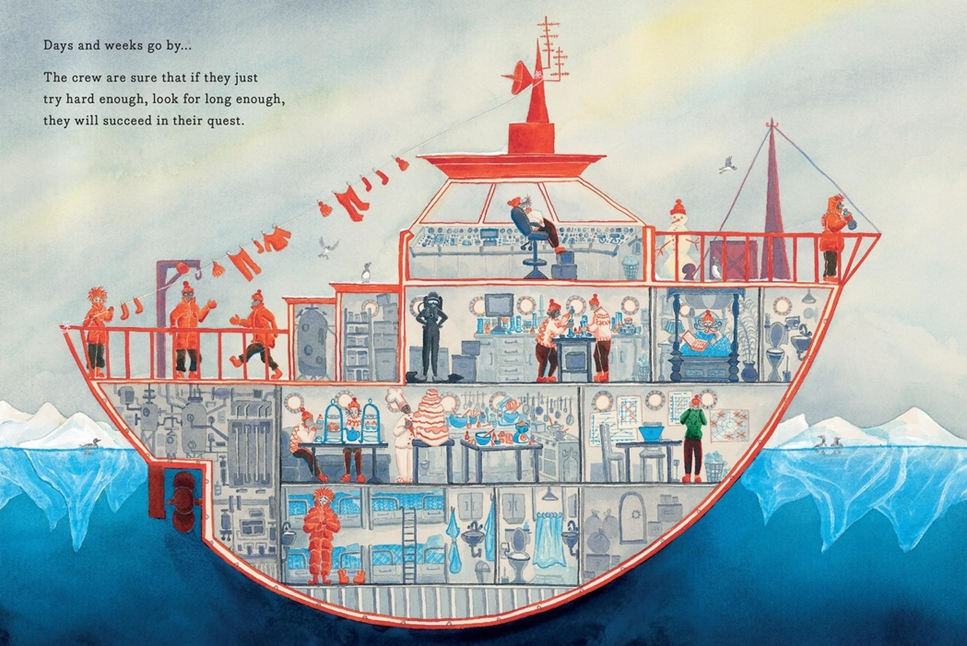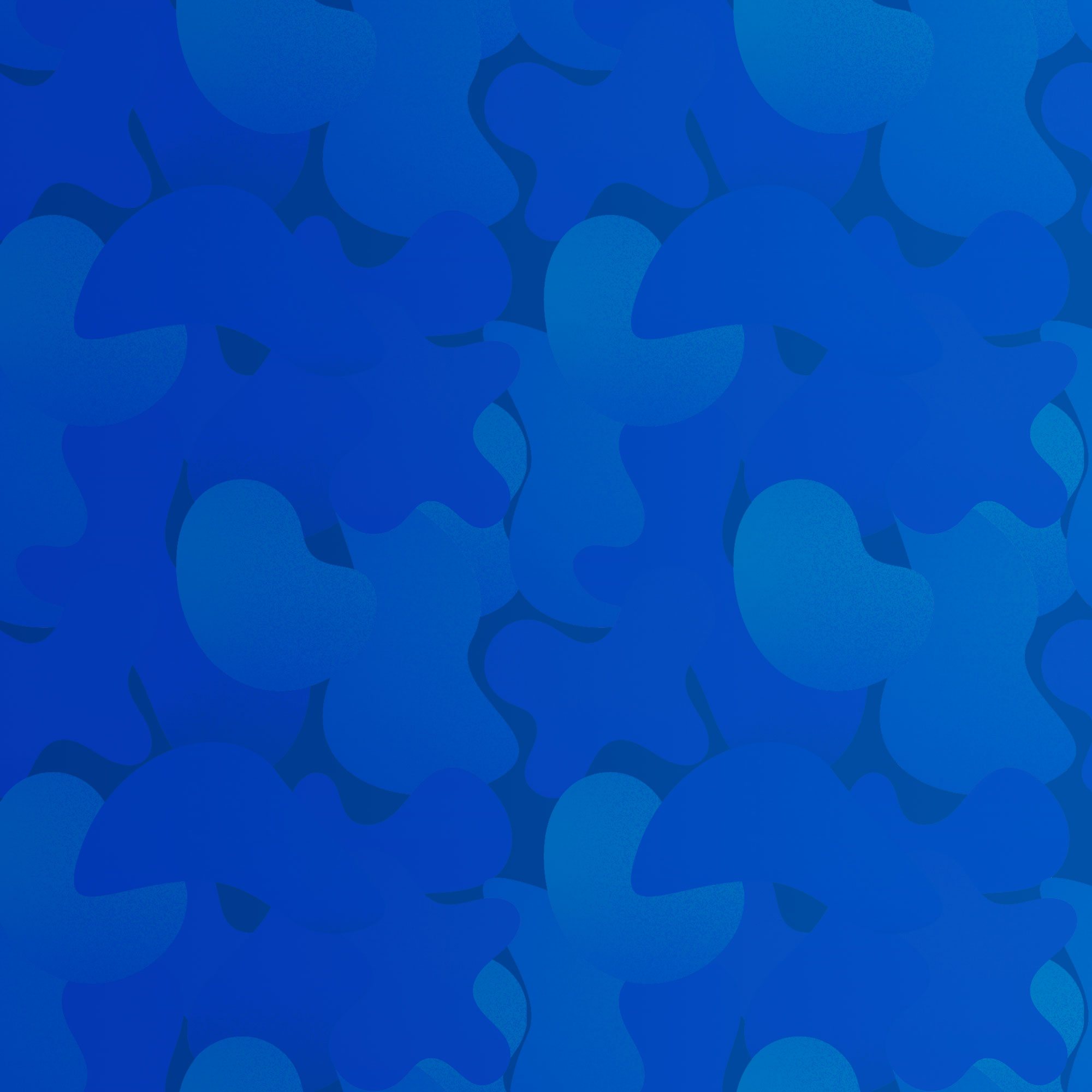Chloe Savage's The Search for Carmella: Introducing Mindfulness to young children


About Author
Chloe Savage introduces her new picture book, The Search for Carmella, a story about mindfulness and learning to enjoy the journey rather its outcomes.
Chloe was born and raised in Stevenage. She studied TV and Film Set Design at Cardiff and has an MA in Children's Book Illustration from The Cambridge School of Art. She has worked in opera, film and television. While doodling on call sheets, Chloe found her way to her great love of illustration and storytelling.
Chloe loves food and the seaside, and lives in Hitchin with her husband. Find her on Instagram @chloe.the.savage.
Interview
Chloe Savage's The Search for Carmella introduces mindfulness to young children
Published by Walker Books, November 2024
Follow scientist Dr Rose as she sets off on an expedition to find the mythical Carmella, which is rumoured to live deep in the ocean. As the journey progresses, Dr Rose discovers that it is the journey itself, rather than its outcomes, that brings true pleasure.
The Search for Carmella is a simple but profound introduction to mindfulness for children of any age, inviting discussion about what they enjoy in their day-to-day lives, and giving them an important tool to support their wellbeing.
We spoke with author and illustrator Chloe Savage, creator of The Search for the Giant Arctic Jellyfish, to find out more about what inspired The Search for Carmella, and how to use the story with children to inspire them to begin their own mindfulness journey.
![]()
Creative Challenge: The Search for Carmella
Anne is really good at practicing mindfulness, and finds joy all around them in the things they can feel, smell, touch and hear to make the journey as joyful as the end goal. Determined to make their adventure on the bottom of the sea as brilliant as possible, Anne packs heaps of lovely things to make their day comfortable and happy.
Imagine that you are going on a deep sea adventure after a glowing Carmella. What are the little and the big things you would pack in your submersible, to make your journey as joyful as possible?
![]()
Q&A with Chloe Savage, exploring the inspiration behind The Search for Carmella
"It's about mindfulness and learning to find joy in the journey, in the wonderful things
immediately around you." Chloe Savage
1. Thank you for joining us on ReadingZone. Can you tell us a little about yourself and the kinds of picture books you enjoy creating?
I love to make work which is detail rich, with layers of sub-narratives; look out for the crabs, they escape on the title page and are thoroughly furious through the rest of the book. I like there to be an element of awe and scale; this sort of work is so much fun to make. I love the challenge of experimenting to make something new and pushing myself to learn new things.
2. What is your new picture book, The Search for Carmella, about, and what inspired this search about a marine biologist's search for a mythical creature?
The Search for Carmella is the story of Dr Rose's adventure into the deep sea in search of a bioluminescent sea monster called Carmella. It's about mindfulness and learning to find joy in the journey, in the wonderful things immediately around you.
Dr Rose is a marine biologist and an explorer because we need our young people to see women represented in all roles of life, particularly where there has been a historical bias towards men. Our right to be curious humans should be a universal feeling shared by people of all genders.
The story is inspired by my own pursuit of mindfulness, but most importantly this story is a gift for my big sister, who truly struggles with finding joy in the passage of time. My sister is both Rose and Anne; what could be more human than the duality and contradiction of character in a person who has both immense capacity for novelty and fun, while simultaneously feeling that anything which marks the passage of time is a sadness and an agony? The gift to her would be that anxiety being softened by the immense joy of the present moments.
3. How does this book link to your earlier picture book, The Search for the Giant Arctic Jellyfish?
It was so exciting for me to get to explore another female scientist character. Particularly as the centre of this story is the bond between Dr Rose and Anne. There are so many ways to be a female leader, and for me, Dr Morley's story in The Search for the Giant Arctic Jellyfish was only the beginning.

4. What can children learn about science and exploration from these books?
I have spent a lot of time talking to children about failure and perseverance in The Search for the Giant Arctic Jellyfish, about the beautiful and essential role failure plays in experimentation and learning. This pervades every aspect of life, not just science and exploration.
Embracing failure as a key part of life will create a culture of innovation which is not restricted by fear of imperfection. Imagine all the things we could inspire people to do if they weren't afraid of failing? When we step past our fear of failing we can begin to actually enjoy the process of searching, completely unshackled by other people's judgement.
5. The Search for Carmella also explores the journey itself; what would you like children to take from Dr Rose's journey through the story? How can this be used as a point of discussion with children?
What I hope people will take away from The Search for Carmella is a sense of mindfulness, and learning to savour the process and the journey. Dr Rose is hyper-fixated on her end goal, so she completely fails to see the wonders immediately around her. Anne helps Rose come to a place where the journey is just as sweet as the end goal.
I have been talking with children a lot about mindfulness recently, I tell them all about the pockets of happiness which I have found today, like the crunchy leaves outside and my soft jumper, and we look around ourselves and find the loveliness immediately around us. It is so important to savour the joys, and some days; even the tiniest pocket of happiness is a big win.

6. What is your process for creating your picture books?
I always begin with a solid period of research. I am by no means an expert in marine biology, space exploration or rainforests, so it is essential to give my imagination food to work with in the form of thorough research. It forms the foundation of the fine details and the bigger picture, and from there I exaggerate or manipulate it to suit how my imagination wants that place to be.
The next part of the process is developing the story, which comes in the form of scribbled words and pictures in a series of rough dummy books. The words and the pictures very much come together for me, they are so interdependent, and I find it very hard to separate the two.
While the dummy book process is rolling on, I experiment with how the characters and their environments need to be physically painted. The bioluminescent glow was a big challenge to paint, and I have whole boxes of failed experiments. A really key part of this process is the feedback from my exceptional editors, who bring insight and clarity which helps to move me forward. Their notes are invaluable.
Once we are all happy, the long process of painting final art begins. As I work in traditional media and watercolour takes so long to dry, this is a really long process. Over the course of the weeks and months, the final artwork gets pinned up on the washing line around my corridor, it's really helpful to see the art laid out like that as a whole sequence.
7. We love the details you include in your images - especially the map and ship cross-section. Why do you put so much detail into your images, and how do you create them?
My work is highly detailed, so that regardless of your reading ability, everyone will find something to enjoy in the book. This is for children like me who really struggled with reading in school, and sadly, too many children are still leaving school feeling that reading is not a pleasure, and so this work is for them.
In terms of creating the work, the details of all the sub-narratives take some time to weave into the layouts. Then the paintings of the cross-sections themselves require a lot of time and patience to build up the tiny details. It's physically quite demanding, so if the schedule allows it, I try to take breaks to work on other pieces at the same time. I usually wear through a few brushes before the end of the deadline.

8. Do you have any more picture books planned about science and exploration?
My next book is The Search for our Cosmic Neighbours, which will be published next September. Set in space, it is a story about communication, frustration, meeting strangers with kindness, and intergalactic diplomacy. There are crystals and mushrooms, some huge rocket cut-throughs, and many, many aliens. The book I am working on now is an adventure into the jungle…
9. What kinds of things do you enjoy doing when you're not creating picture books - are you a keen explorer of new places, like your characters?
Yes, absolutely, I like to go on "adventure walks", which have to be on new paths or in new cities, and if that new path can lead me to some really amazing food, then the day will be completely perfect. But food is my greatest love, the joy it brings me is beyond measure, you'll notice there is always some element of food in my books too.
Chloe Savage introduces The Giant Arctic Jellyfish (Walker Books)
In this story of hope and endurance, we follow a scientist and her team during their search for the elusive 'Giant Arctic Jellyfish'. Young children will delight in spotting the Jellyfish hidden on the pages, while the message of perseverance and hope will speak to all ages.
The Giant Arctic Jellyfish is a stunning picture book with incredible artwork by Chloe Savage. Here, she tells us more about the inspiration behind her picture book and why its story, about failure and resilience, is such an important one for children to hear:

"Even children too young to read independently can be absorbed by all the little moments in the cross sections; it is very important to me that my books should be inclusive to readers of all abilities in this way."
 The Search for Carmella
The Search for Carmella
 The Search for the Giant Arctic Jellyfish
The Search for the Giant Arctic Jellyfish
